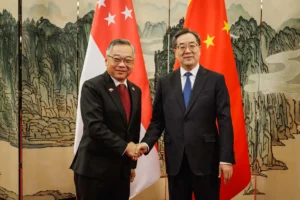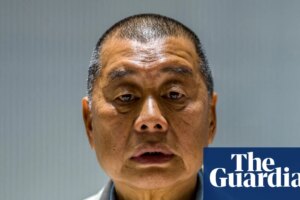
GYEONGJU, South Korea: Singapore, Chile and New Zealand on Friday (Oct 31) launched negotiations for a new Green Economy Partnership Agreement (GEPA), committing to move toward a low-carbon future together.
The agreement could see the countries cooperating in several aspects of the green economy, such as sustainable aviation fuel, carbon credits, renewable energy certificates and trade-related climate measures.
Singapore Prime Minister Lawrence Wong and his counterparts from Chile and New Zealand announced the launch of negotiations in South Korea, where the Asia-Pacific Economic Cooperation (APEC) summit is taking place.
Hailing it as a milestone in international trade, Mr Wong said growth and sustainability were previously seen as competing priorities.
“But technological breakthroughs have challenged this assumption,” he said, adding that recent developments prove that both priorities can be mutually reinforcing.
Trade, he said, can facilitate the collective green transition – by allowing goods, services, technology and finance to flow across borders.
That is why the three countries had formed a joint working group on trade and the green economy in November 2024, he said.
The group assessed how best to advance trade and climate action together, and considered proposals for a new way to improve cooperation.
Geopolitical developments and climate commitments are reshaping business priorities, Singapore’s Ministry of Trade and Industry (MTI) said in a press release.
Trade strategies and environmental goals are becoming increasingly interconnected and companies are adapting to new regulations and changing demands, said MTI, adding that the shift to a low-carbon future creates challenges and opportunities.
WHAT THE NEGOTIATIONS ARE ABOUT
Officials have recommended initial topics to be considered under the GEPA, including issues that have “grown in salience”, said Mr Wong.
He said sustainable aviation fuel can make a significant impact if widely adopted across borders, while carbon credits can be traded to support the net-zero transition.
Trade-related climate measures can also be better aligned with policy goals, he added.
“Our aim is to set common rules and standards around these topics, so that there will be coherence and common foundations in what we do. And by taking such actions, the GEPA can help to modernise trade and investment policies to support flows of environmental goods and services,” he said.
It will also unlock new opportunities in the green economy for Singapore companies, create good jobs in related sectors and lower barriers to trade while accelerating the green transition.
Mr Wong said Singapore, Chile and New Zealand may be small countries, but they have a proven track record of pioneering innovative agreements together.
He pointed out that the three countries started the Trans-Pacific Strategic Economic Partnership with Brunei, which later evolved into the Comprehensive and Progressive Agreement for Trans-Pacific Partnership (CPTPP).
They also signed the first-of-its-kind Digital Economy Partnership Agreement.
“That continues to receive interest from other aspiring economies – a sign of the value which others see in it,” said Mr Wong.
“Now, we are applying the same collaborative spirit to the green economy.”
He encouraged officials from the three countries to look beyond conventional approaches, embrace new ideas and draw on insights from the private sector.
“I am confident that by joining hands, we can turn trade into a force for good, catalyse economic growth while doing our part for the environment and for global climate action,” he said.





